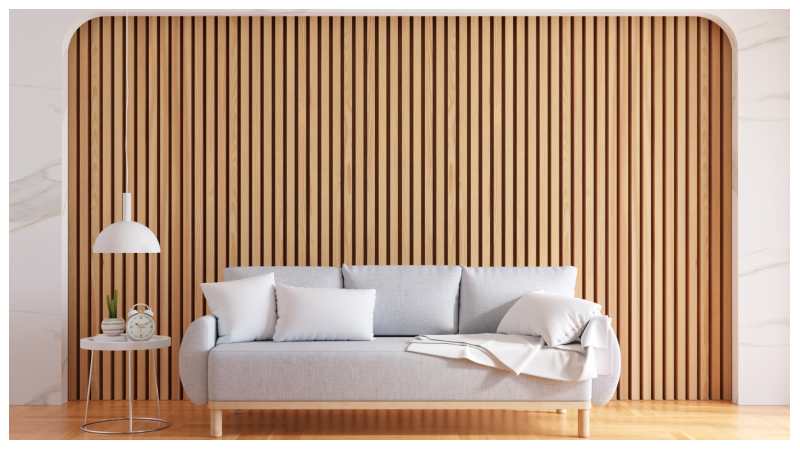When it comes to home interiors, every detail matters — from furniture and flooring to lighting and wall design. One element that has grown increasingly popular for adding both beauty and functionality is wall panels. They offer a versatile and elegant way to elevate your living spaces, providing depth, texture, and sophistication without overwhelming your décor.
In this article, we’ll explore the importance of well-designed interiors, the benefits of using wall panels, and how to integrate them into every part of your home for a timeless and stylish appeal.
1. The Importance of Interior Design in a Modern Home
Your home’s interior is more than just a place to live — it reflects your personality, lifestyle, and sense of comfort. A thoughtfully designed interior can:
-
Enhance mood and productivity
-
Create balance and harmony
-
Increase property value
-
Make small spaces feel larger and more functional
Modern interior design trends emphasize simplicity, natural light, and materials that bring warmth and elegance to the home. Elements such as textures, color palettes, and wall finishes play a major role in defining the overall look and feel of your space.
2. What Are Wall Panels and Why Are They So Popular?
Wall panels are decorative or functional coverings installed on interior walls to improve aesthetics, insulation, and durability. They come in various materials, including wood, PVC, MDF, metal, and fabric.
Their popularity stems from their ability to transform plain walls into stylish design statements. Unlike simple paint or wallpaper, wall panels add dimension, making a room appear more sophisticated and structured.
Homeowners choose wall panels for several reasons:
-
Visual Appeal: They create texture and add architectural interest.
-
Durability: They protect walls from wear, scratches, and stains.
-
Insulation: Certain types provide sound and thermal insulation.
-
Easy Maintenance: They’re simple to clean and long-lasting.
Whether you prefer a modern, rustic, or classic design, there’s a style of wall paneling to suit every taste.
3. Types of Wall Panels for Every Room
Wall panels come in various materials, each offering unique characteristics that fit different parts of the home. Let’s look at some popular types and where they work best.
a. Wooden Wall Panels
Timeless and elegant, wooden panels bring warmth and natural beauty to any space. They’re perfect for living rooms, bedrooms, or studies, adding a cozy and inviting feel.
b. PVC Wall Panels
PVC panels are lightweight, affordable, and resistant to moisture — making them ideal for bathrooms, kitchens, and laundry areas. They’re easy to clean and available in countless patterns and finishes.
c. MDF and 3D Panels
MDF (Medium Density Fiberboard) panels can be molded into decorative shapes, giving walls a luxurious and textured appearance. 3D wall panels, in particular, add depth and character to modern interiors.
d. Fabric or Upholstered Panels
Soft and elegant, fabric panels are often used in bedrooms or entertainment areas to add comfort and acoustic insulation. They also enhance the sense of luxury in any room.
e. Metal Panels
For an industrial or contemporary design, metal panels can be a striking choice. They reflect light beautifully and are durable enough for high-traffic areas.
4. How Wall Panels Enhance Different Areas of Your Home
Every space in your home can benefit from the design and functionality that wall panels provide. Here’s how they can elevate various rooms:
Living Room
The living room is the heart of any home, and wall panels can become its focal point. You can use them behind the TV unit, fireplace, or sofa to create a statement wall. Textured panels or wood grain finishes can make the space feel warm and inviting.
Bedroom
A paneled wall behind the bed adds sophistication and luxury to your bedroom. Choose soft tones or upholstered panels for a serene, hotel-like atmosphere.
Kitchen
In the kitchen, moisture-resistant panels such as PVC or tile-patterned versions help protect walls while adding visual charm. They’re easy to clean and maintain, making them both functional and stylish.
Bathroom
Bathrooms benefit from waterproof panels that resist humidity. They come in marble, stone, or tile effects, giving your space a spa-inspired look without the need for heavy renovation.
Hallways and Entrances
Wall panels can add personality to otherwise plain hallways. Wainscoting or half-wall panels can protect surfaces from scuffs while enhancing visual interest.
5. Design Tips for Choosing and Installing Wall Panels
Selecting the right wall panels requires balancing aesthetics, practicality, and budget. Keep the following design tips in mind:
-
Match the room style: Choose textures and finishes that complement your furniture and flooring.
-
Consider lighting: Panels with a glossy finish reflect light, while matte textures absorb it for a cozier effect.
-
Play with color: Light tones make rooms feel larger; darker shades create intimacy and drama.
-
Balance patterns: Avoid overly busy designs in small rooms; use subtle textures for elegance.
-
Professional installation: While some panels are DIY-friendly, complex designs may require expert fitting for a flawless finish.
With careful selection, wall panels can harmonize beautifully with your existing décor and make any space look polished and modern.
6. The Advantages of Using Wall Panels in Your Home
In addition to aesthetic appeal, wall panels offer numerous practical benefits:
-
Easy Maintenance: Most panel materials are easy to wipe clean and maintain.
-
Durability: They protect walls from moisture, dents, and stains.
-
Quick Installation: Unlike paint or plaster, panels can be installed with minimal mess.
-
Sound Insulation: Certain materials reduce noise between rooms, improving comfort.
-
Value Addition: High-quality wall finishes can enhance your home’s resale value.
By combining functionality with design, wall panels provide an all-in-one solution for modern interiors.
7. Keeping Up with Home Décor Trends
Home design trends continue to evolve, focusing on sustainability, comfort, and personalization. Homeowners are embracing eco-friendly materials, natural colors, and minimalist designs that feel both relaxing and stylish.
Some current interior trends include:
-
Natural wood and stone finishes
-
Accent walls with 3D textures
-
Soft neutral palettes with bold contrasts
-
Layered lighting and open layouts
Incorporating wall panels that align with these styles can help you stay on trend while maintaining timeless beauty.
8. Maintenance and Care Tips
To keep your wall panels looking new and fresh, follow these simple care steps:
-
Dust regularly: Use a soft, dry cloth to prevent buildup.
-
Clean with mild soap: Avoid harsh chemicals that can damage surfaces.
-
Check for moisture: Especially in bathrooms and kitchens, ensure proper ventilation.
-
Polish wood panels: Occasionally, apply wood polish to maintain their shine and texture.
-
Repair promptly: Fix small scratches or loose fittings before they worsen.
Proper maintenance ensures your panels last for years and continue enhancing your home’s appearance.
9. Balancing Style and Comfort in Every Room
A beautiful home combines functionality and comfort. Every element — from walls and floors to furniture and décor — should contribute to the overall harmony.
Here are some quick design suggestions for a balanced home interior:
-
Use light colors to make rooms feel larger.
-
Incorporate natural textures like wood or rattan for warmth.
-
Add layered lighting to highlight textures and details.
-
Keep décor minimal and purposeful to create a relaxing atmosphere.
-
Introduce plants or greenery for freshness and vibrancy.
By thoughtfully integrating materials and colors, your home will feel both stylish and welcoming.
10. Why Wall Panels Are a Smart Long-Term Investment
While some design choices are purely aesthetic, wall panels offer lasting value. They protect your walls, improve insulation, and reduce maintenance costs over time.
Their timeless appeal means they rarely go out of style, and they can easily be repainted or refinished if you decide to change your décor later. Whether you’re renovating an old home or building a new one, panels are a smart investment in both durability and design.
Conclusion
Creating a beautiful home interior involves more than just choosing the right furniture or paint color — it’s about crafting an environment that reflects your taste and enhances your comfort. Wall panels play a crucial role in achieving that balance by combining elegance, practicality, and modern design versatility.
From textured wood to sleek PVC, there’s a style for every room and budget. With proper selection and maintenance, wall panels can turn ordinary walls into extraordinary design features, giving your home a fresh, timeless, and polished look.
FAQs About Wall Panels
1. Are wall panels suitable for every room?
Yes, wall panels can be used in almost every area of your home, from living rooms to bathrooms, as long as you choose the right material.
2. How long do wall panels last?
High-quality panels can last for many years with minimal maintenance, especially if kept clean and protected from excessive moisture.
3. Can wall panels be painted or customized?
Yes. Many materials, such as MDF and wood, can be painted or refinished to match your desired color scheme.
4. Are wall panels easy to install?
Some types, like PVC or MDF panels, can be installed with adhesive or clips. More complex designs may require professional help for precision.
5. Do wall panels help with insulation?
Yes. Certain materials offer soundproofing and thermal insulation, helping maintain a comfortable indoor temperature.

